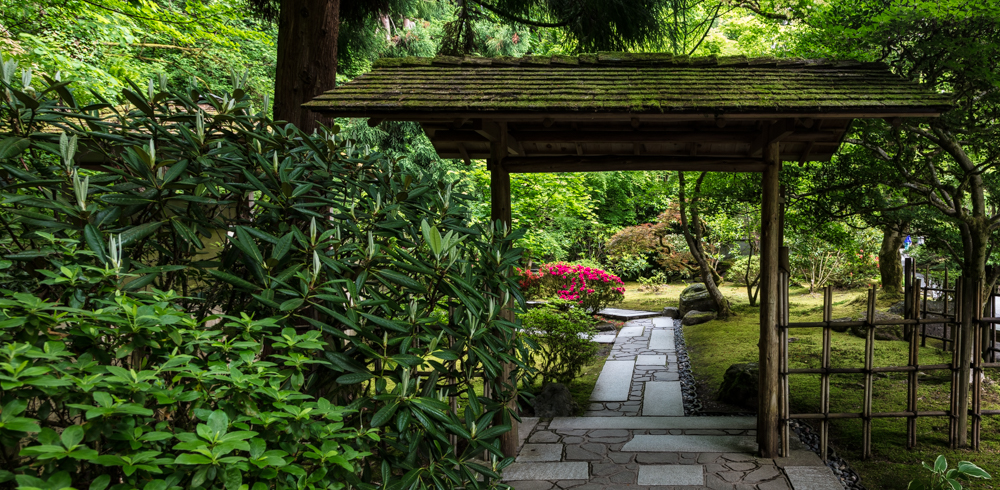Guest Blog: Modern Architecture and Design Society (MA+DS)
The Pacific Northwest is, in many ways, entwined with the entirety of the Pacific Rim. Culturally and economically, from San Francisco to Portland, from Seattle to Vancouver, Asia’s influence on this region of the United States is undeniable.
One of the most intriguing “cultural exchanges” happens at the world-famous Portland Japanese Garden. The 9-acre botanical park, which opened in 1967, was originally designed by Tokyo Agricultural University professor Takuma Tono and delights over 350,000 visitors per year. Widely considered to be one of the most authentic Japanese gardens outside of Japan, the park delights in tranquility and harmony with a unique blend of the ancient and the modern unlike almost anywhere else you might visit.
Recently, the Portland Japanese Garden has opened a new 3.4-acre expansion/reclamation project – the new Cultural Village. Designed by world-renowned Japanese architect Kengo Kuma, who was also recently tapped to assume control of the design for Tokyo’s 2020 Olympic stadium, the new expansion adds three new buildings that house a café, visitor’s center, a gallery with rotating exhibits, and a library.
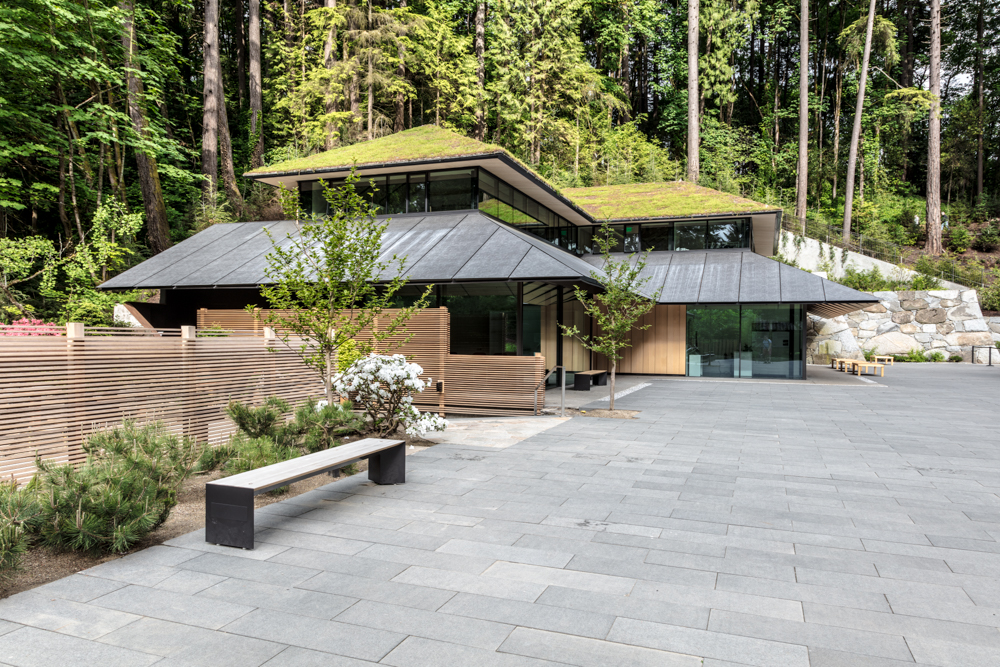
Of particular note are the living roofs over the new buildings. Designed to reference classical Japanese thatched roofing, underneath is a supporting system of ceramic foam panels that not only support the growth of the covering sedum but also provide water retention and additional insulation.
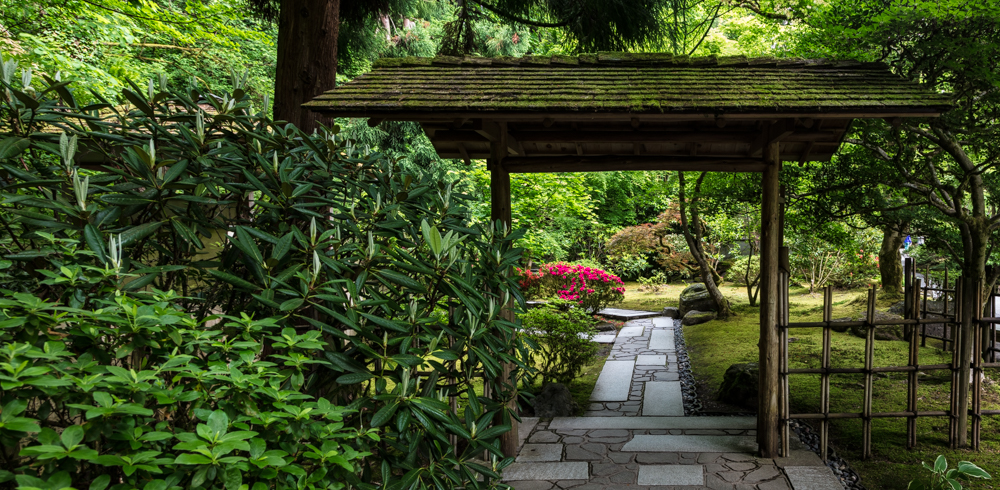
Considering how much contemporary theory is included in these structures, perhaps the most impressive accomplishment of all is how they blend seamlessly into the 50-year-old garden, while still being unashamedly modern in form, in concept, and in execution. Much like the modern adobe in the American Southwest, the Japanese aesthetic has an inherent connection to modernism, with its clean, simple lines and forms, and high regard for the natural surroundings. But even so, when you visit the Garden and see the pagoda-like roofs, the masterful wood craftsmanship, and the strategic use of exterior light to illuminate the interiors of these buildings, you can’t help but come away amazed at how Kuma has blended a thousand years of design tradition into a very contemporary space, while maintaining a seamless harmony with the Garden’s original construction and materials.
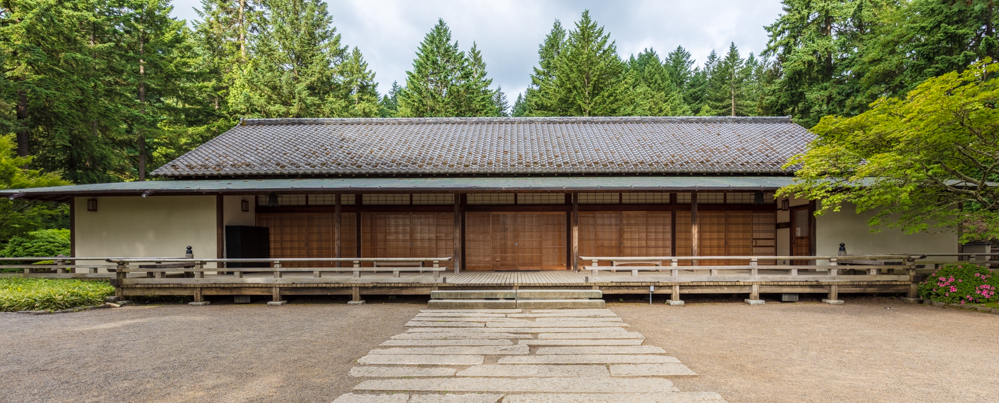
Created to meet LEED standards, Kuma was quoted in Architectural Digest as saying, “We are living in the 21st century; we should present a new type of sustainable building (and) …traditional Japanese architecture shows us a lot of hints about sustainability.” There’s no doubt that the new Cultural Village at the Portland Japanese Garden is, in these terms (and in many others as well) and unqualified success.
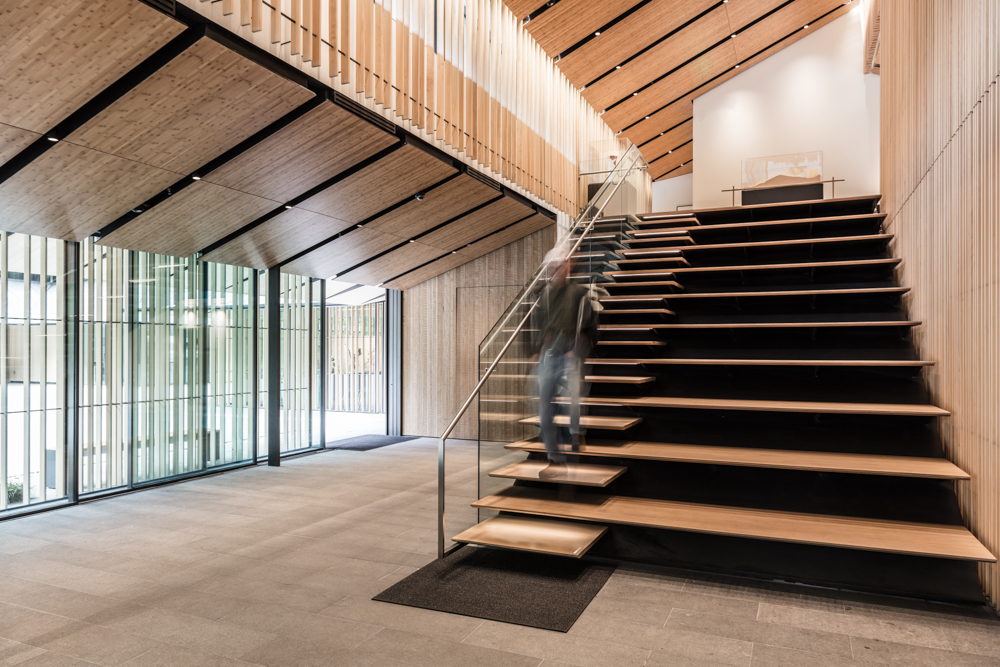
The Portland Japanese Garden is a private non-profit organization and is open from 10 am to 4 pm. You can find it at 611 SW Kingston Ave, Portland, OR 97205 or learn more on their website.
The Modern Architecture + Design Society produces architecture and design events across North America.
Photo credit: Jamie Leasure, Modern Architecture + Design Society
